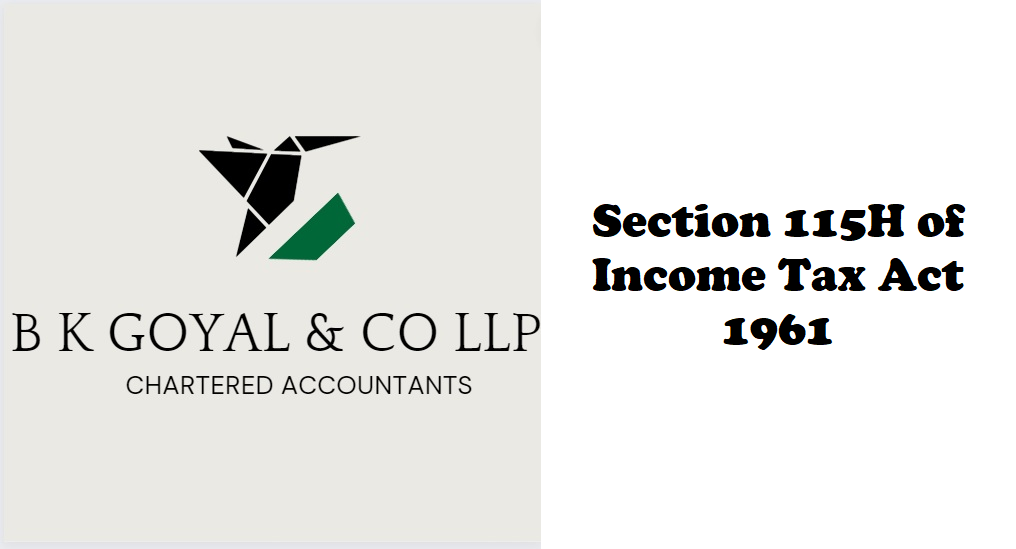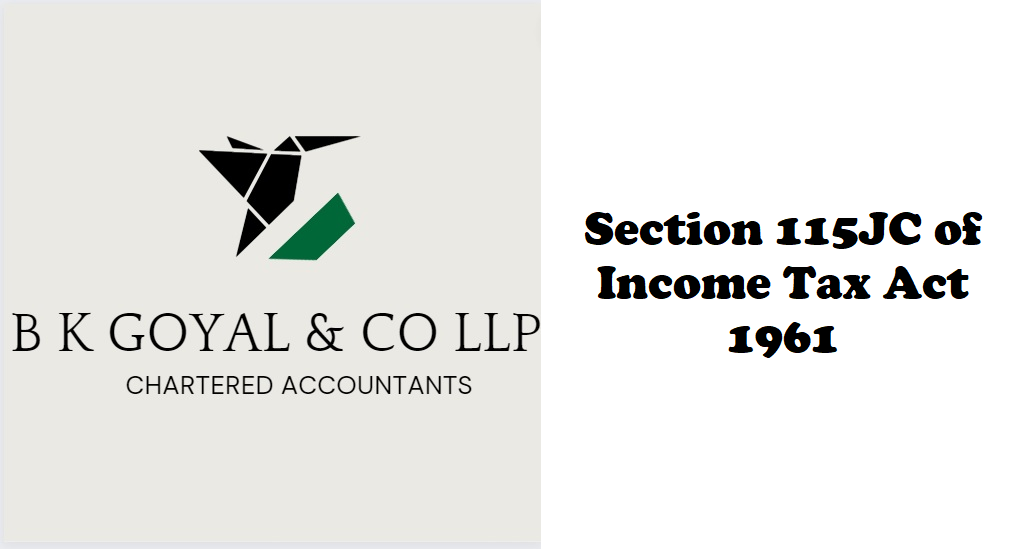Section 115JD of Income Tax Act 1961
Tax credit for alternate minimum tax (1) The credit for tax paid by a person under section 115JC shall be allowed to him in accordance with the provisions of this section. (2) The tax credit of an assessment year to be allowed under sub-section (1) shall be the excess of alternate minimum tax paid over the regular income-tax payable of that year: Provided that where the amount of tax credit in respect of any income-tax paid in any country or specified territory outside India under section 90 or section 90A or section 91, allowed against the alternate minimum tax payable, exceeds the amount of the tax credit admissible against the regular income-tax payable by the assessee, then, while computing the amount of credit under this sub-section, such excess amount shall be ignored. (3) No interest shall be payable on tax credit allowed under sub-section (1). (4) The amount of tax credit determined under sub-section (2) shall be carried forward and set off in accordance with the provisions of sub-sections (5) and (6) but such carry forward shall not be allowed beyond the fifteenth assessment year immediately succeeding the assessment year for which tax credit becomes allowable under sub-section (1). (5) In any assessment year in which the regular income-tax exceeds the alternate minimum tax, the tax credit shall be allowed to be set off to the extent of the excess of regular income-tax over the alternate minimum tax and the balance of the tax credit, if any, shall be carried forward. (6) If the amount of regular income-tax or the alternate minimum tax is reduced or increased as a result of any order passed under this Act, the amount of tax credit allowed under this section shall also be varied accordingly. (7) The provisions of this section shall not apply to a person who has exercised the option referred to in section 115BAC or section 115BAD. Following sub-section (7) shall be substituted for the existing sub-section (7) of section 115JD by the Finance Act, 2023, w.e.f. 1-4-2024: (7) The provisions of this section shall not apply to a person, where— (i) such person has exercised the option referred to in sub-section (5) of section 115BAC or sub-section (5) of section 115BAD or sub-section (5) of section 115BAE; or (ii) income-tax payable in respect of the total income of such person is computed under sub-section (1A) of section 115BAC. Analysys of Section 115JD The following points describe how tax credits are calculated and used under section 115JC: A person who pays taxes under section 115JC can claim a tax credit based on the provisions of this section. The tax credit to be allowed is calculated as the difference between the alternate minimum tax paid and the regular income tax payable for a particular assessment year. If any tax credit is claimed for income taxes paid in a foreign country or specified territory under section 90, section 90A, or section 91, and if this credit exceeds the amount of tax credit allowed against the regular income tax, the excess amount will be ignored when calculating the tax credit under this section. No interest is payable on the tax credit allowed under sub-section (1). The tax credit determined under sub-section (2) can be carried forward and set off in subsequent assessment years. However, the carry forward is limited to a maximum of fifteen assessment years following the year in which the tax credit becomes allowable. If the regular income tax or the alternate minimum tax amount is changed due to an order passed under the Income Tax Act, the tax credit allowed under this section will also be adjusted accordingly. The provisions of this section do not apply to individuals who have chosen the tax options mentioned in section 115BAC, section 115BAD, or section 115BAE. Additionally, it does not apply if the income tax payable is calculated under sub-section (1A) of section 115BAC. To summarize, this section allows individuals to claim a tax credit for the difference between the alternate minimum tax and the regular income tax. The credit can be carried forward for up to fifteen years and adjusted based on changes to the tax amounts. However, certain individuals who have chosen specific tax options or fall under specific income tax calculations are not eligible for this tax credit. Example 1: Let’s assume Mr. Sharma, an individual taxpayer, has paid a regular income tax of Rs. 5,00,000 in the assessment year 2023-2024. However, he also paid an alternate minimum tax of Rs. 3,50,000 in the same year. As per the provisions mentioned, Mr. Sharma is eligible for a tax credit. Therefore, the tax credit allowed to him would be the excess of alternate minimum tax paid over the regular income tax payable, which is Rs. 3,50,000 – Rs. 5,00,000 = -Rs. 1,50,000 (negative value indicates no tax credit is available against regular income tax payable). Example 2: Suppose Ms. Patel, a resident individual, has exercised the option mentioned in sub-section (5) of section 115BAD for the assessment year 2024-2025. In this case, the provisions of section 115JC do not apply to her. Therefore, any tax credit calculations under section 115JC would not be relevant to her tax liability for that assessment year. Example 3: Mr. Kumar, an Indian resident, has earned income from a specified territory outside India. He paid income tax of Rs. 2,00,000 in that specified territory, and he also paid an alternate minimum tax of Rs. 1,50,000 in the assessment year 2023-2024. As per the provisions, if the tax credit in respect of any income tax paid in a specified territory outside India exceeds the tax credit admissible against the regular income tax payable, the excess amount is ignored. In this case, if the tax credit against regular income tax payable is less than Rs. 2,00,000, the excess amount of Rs. 50,000 will be ignored while computing the tax credit under section 115JC. Practice area’s of B K Goyal & Co LLP Income Tax Return Filing | Income Tax Appeal | Income Tax Notice | GST Registration | GST Return Filing | FSSAI Registration | Company Registration
Section 115JD of Income Tax Act 1961 Read More »









